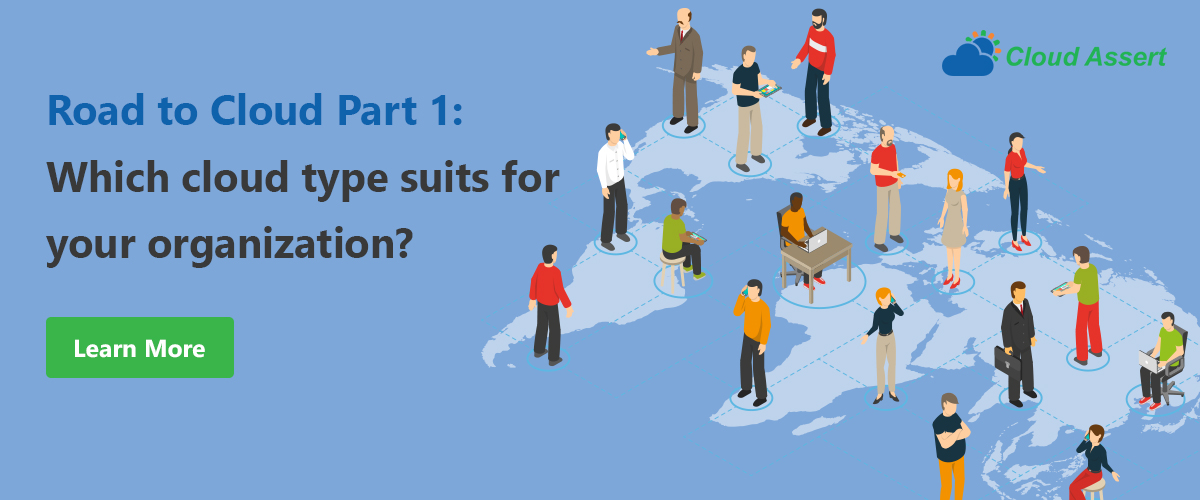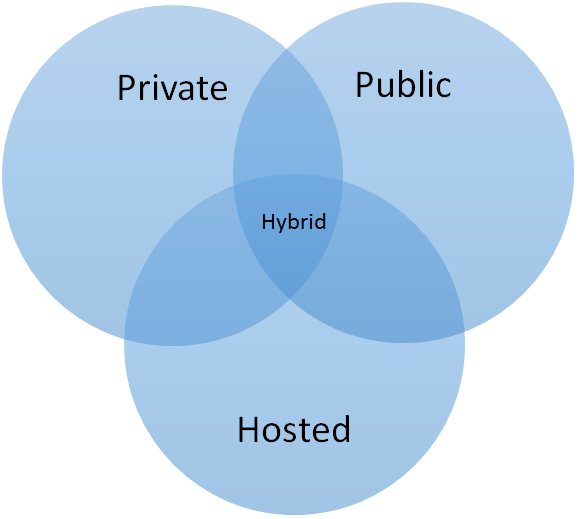
More and more organizations are now starting to embrace cloud if not they do already, with multiple choices both on the type of the cloud and different cloud providers, it gets confusing to choose the best fit and for the fun of it let us say it 'gets cloudy' to land a decision confidently that will prove to be effective long term.
Cloud categories:
For the purposes of this article (please skip the table if you are familiar with this):

| Private |
Datacenters / Labs within premise of your organization running cloud solutions |
| Public |
Amazon EC2, Windows Azure, Google App Engine |
| Hosted |
Like private cloud, only for your organization, but hosted and managed by a service provider |
| Hybrid |
Some applications are within on premise private cloud and some are on public cloud |
Another type not listed above is 'Mixed Mode'. People may confuse or think that they are doing 'Hybrid Cloud', while what they really have is just a mix of same old things with miniscule public cloud usage. Organically most organizations go through this phase of 'Mixed Mode', where handful of teams and business units started using public cloud, while still most of the applications and process depend on traditional IT platform. This phase may also include a stage what some folks call as 'Rouge IT', when business units bypass IT and procure public cloud resources without the knowledge or approval of Enterprise IT organizations.
When teams and organizations are in the 'Mixed Mode', there is lot of excitement from one side and at the same time frictions and uncertainty loom. It is at this time Enterprise IT need to step up and bring order by establishing guidelines, process and roadmap for the enterprise cloud strategy.
Enterprise IT organizations have a major role now in setting up proper cloud architecture and process in place, contrary to what some might think that they are loosing control because of cloud. This task of bringing alignment, choosing a common theme and platform for the organizations various units lies in the hands of IT and it is time to spearhead that transformation now. Get help and bring in resources who have experience in cloud to provide guidance and knowledge, analyze different factors and choose a roadmap that fits your organization business needs. Hopefully in this article we will provide you with enough information to get started on that journey.
When to invest in Private Cloud ?
Private Cloud is not just about keep doing what you are doing with the resources managed inside your premise in a lab or datacenter with the same toolsets used for ages.
Private Cloud for established organizations is about transforming existing IT services:
- to modern self-service, automated process's
- to provide on-demand and auto scalability built-in to every service
- to move existing resources like servers and storage under private cloud pool
- to consolidate un-used capacity allocated under myriad of projects and teams and bring them under common private cloud resource pool.
- Take for example, the dev, test, UAT environments under different teams going unused during different phases of the projects and with traditional toolset, there is not much can be done to re-allocate or scale down those resources quickly.
- Private cloud solutions like Windows Azure Pack not only make it easier to discover those under-used resources, they make it easier for the teams to scale down and up quickly.
- to choose and setup the private cloud architecture leveraging provided tools to ensure the platform natively supports:
- high availability
- fault tolerance
- optimized for performance
- security boundaries are set appropriately
- max quotas and capacity defined for various units, with the flexibility to increase on demand
- integrated with existing enterprise solutions like authentication and policies
- to come up with roadmap, capacity planning and timelines to onboard resources and applications to leverage the enterprise private cloud
- to educate, advertise and market the enterprise private cloud, raise awareness to business units and engineering teams that, what they can get in a public cloud is now available in-house, with the proven security and one-on-one care they are used, except now fully transformed into a modernized, self-service, ondemand scalable, multi-tenant feature rich cloud solution.
Motivations to choose Private Cloud:
We have discussed some of this in the article about 'Windows Azure vs Windows Azure Pack'. Let us see the favorable points for choosing a private cloud.
- You already have a huge investment for on premise datacenter or lab for your organization and you want to leverage it
- Some of your applications can not be moved to public cloud due to:
- Regulatory and compliance reasons
- Performance and colocation with your offices
- Security and highly sensitive nature of data
- You want 1-1 care and support like you get from your own IT organization
- You have applications that need hardware and software SKUs that simply is not going to be available in public cloud or makes cost sense
- You always want to have the ability to run things using resources under your own control, even if you are okay to invest in services provided by public or hosted cloud providers
- You migration to public cloud is going to take years, meanwhile you want to have the edge of providing the same agility, flexibility, feature set and scalability to your teams to compete in the latest business arena without boiling the ocean
When to choose in Public Cloud ?
(...coming in part 2, stay tuned.)